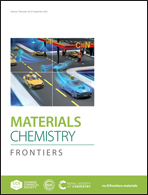Constructing NiMoP nanorod arrays with a highly active Ni2P/NiMoP2 interface for hydrogen evolution in 0.5 M H2SO4 and 1.0 M KOH media†
Abstract
Exploiting non-noble metal catalysts with high activity and excellent stability is essential for hydrogen production by electrochemical water splitting. Notably, interface engineering is one of the effective ways to boost the catalytic activity for the hydrogen evolution reaction (HER). Here, a one-dimensional NiMoP nanorod catalyst with a novel Ni2P/NiMoP2 heterostructure is obtained using a straightforward hydrothermal and phosphating method. Remarkably, the NiMoP nanorod shows excellent catalytic activity for the HER, and only needs overpotentials of 44 and 88 mV to drive a current density of 10 mA cm−2 under acidic and alkaline conditions, respectively. Moreover, it also displays better activity than Pt/C under large current densities (above 200 mA cm−2) in different media. Further analysis reveals that the effective adjustment of the electronic structure of the Ni2P/NiMoP2 interface is the main reason to realize an efficient HER because the construction of a heterostructure effectively promotes the electron transfer between Ni and Mo at the interface, thus optimizing the adsorption energy of reaction intermediates in the HER process. At the same time, the distinctive one-dimensional structure could also increase the number of active sites to accelerate mass transfer. This work provides a highly active noble-metal-free catalyst for the HER, and provides a new insight to design and construct novel electrocatalysts rationally.



 Please wait while we load your content...
Please wait while we load your content...